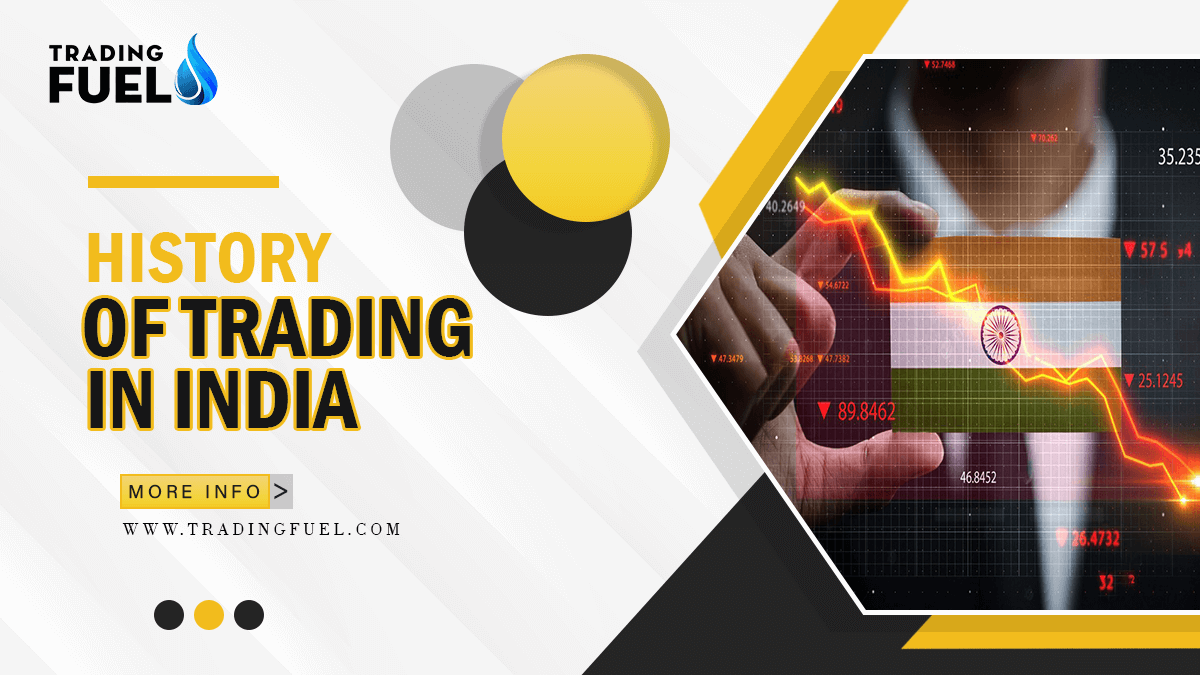History of Trading in India
The financial market in India is rapidly expanding and is predicted to soon become one of the world’s leading markets. This growth is driving the Indian share market forward and encouraging investors to invest in it.
The history of the Indian share market can be traced back to 1875 when it was called the “Native Share and Stock Broker’s Association“. Later, it became known as the Bombay Stock Exchange (BSE) and started with 318 members. Today, India boasts of 24 share markets located in different parts of the country, as well as numerous financial intermediaries including banks, non-banking financial corporations, insurance companies, mutual funds, and others.
Historical Evaluation of Stock Exchanges in India
- In 18th century when East India Company started trading in loan securities, trading of securities in India Started.
- In the 1830s, corporate shares began to be traded in Bombay, with Bank and Cotton presses being among the first stocks to be traded.
- The History of Trading in India, starts back in 1850s, when 22 stockbrokers started trading informally opposite the town hall of bombay under a banyan tree
- As the number of brokers increased, the trading location shifted until it finally settled in 1874 at what is now known as Dalal Street.
- The Local Share and Stockbrokers Association, which was an unofficial group at that time, organized themselves as the Bombay Stock Exchange (BSE) in 1875.
- Not only in India but, in Asia also BSE is the oldest stock exchange. And also it was the first to be granted permeant recognition under the Securities Contract Regulation Act, 1956.
- The Ahmedabad Stock Exchange was established in 1894, following the BSE. The main focus of it was trading shares of textile mills.
- The Calcutta Stock Exchange started its operations in 1908. Initially shares of plantations and jute mills were traded on this exchange.
- The Madras Stock Exchange was established in 1920, following the BSE and the Calcutta Stock Exchange.
- After independence, the BSE controlled the volume of trading. However, due to the low level of transparency and unreliable clearing and settlement systems, there was a growing need for a financial market regulator.
- In 1986, the Sensex (Sensitive Index) was launched by the BSE, which was followed by the BSE National Index in 1989.
- The Securities and Exchange Board of India (SEBI) was established in 1988 as a non-statutory body. Later, on January 30, 1992, it was granted statutory status by passing the SEBI Act.
- There was requirement for another Stock Exchange which was large enough to compare BSE, and which also provides greater transparency. So that in 1994 the National Stock Exchange was founded.
- In 1994, the NSE began to operate in the Wholesale Debt Market (WDM) segment. After that in the year 2000, derivatives segment was launched.
- In 1995, the BSE adopt an electronic trading system and discard the open-floor system.
- In 2015, SEBI and FMC ( Forwarded Markets Commission) got merged to strengthen commodities market regulation, facilitate foreign institutional and domestic , and launch new products
- After India gained independence, 23 new stock exchanges were established in addition to the BSE.
- However, at present, there are only five recognized stock exchanges apart from the BSE and NSE:
⮞Calcutta Stock Exchange Ltd.
⮞Magadh Stock Exchange Ltd.
⮞Metropolitan Stock Exchange of India Ltd.
⮞India International Exchange (India INX)
⮞NSE IFSC Ltd.
Currently, with a market capitalization of approximately $1.7 trillion, the BSE is considered the world’s 11th largest stock exchange. The NSE’s market capitalization is estimated to be over $1.65 trillion.
The Sensex is the flagship benchmark index of the BSE, while the Nifty50 is the equivalent for the NSE.
Both BSE and NSE are still on par in terms of share trading volumes. With the advent of technology, people can now conduct online trading from the comfort of their homes. Several facilities, such as zero brokerage Demat accounts with live updates, are available to investors.

